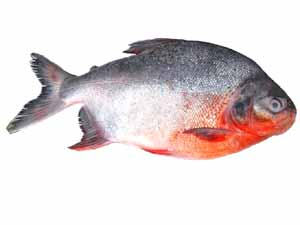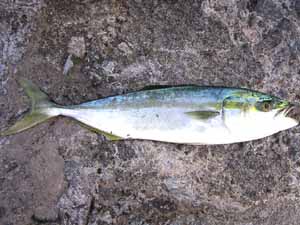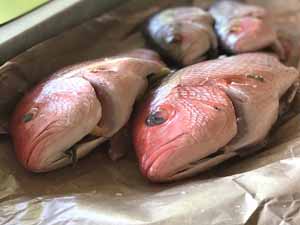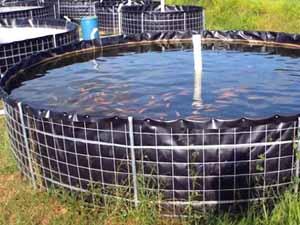The Bonga Shad fish is a clupeid fish which occurs along the coasts and in brackish water of coastal lagoons, rivers and lakes of western Africa.
It is also known as Rasoir, Shad or simply as Bonga. It is available from Dakhla in Western Sahara to Lobito in Angola.
The Bonga Shad fish has a wide distribution, with no known major widespread threats.
And currently it is listed as Least Concern. Read some more information about this fish species below.
Bonga Shad Fish Characteristics
The Bonga Shad fish have a fairly deep and compressed body. There are scutes present along their belly. Their upper jaw is with distinct median notch, into which tip of lower jaw fits.
They have long, fine and numerous lower gillrakers (about 3 times as long as gill filaments). The upper gillrakers are V-shaped, and bent sharply upward.
In case of coloration, there is a faint dark spot behind gill cover, sometimes followed by others. The dorsal fin tip is black, and caudal fin is deep chrome yellow. They have golden tints on their body.
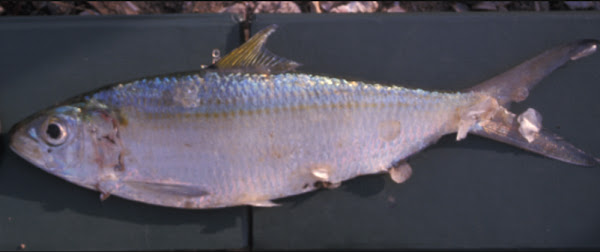
Average body length of the mature fish is around 25 cm, with a maximum recorded body length is 45 cm. Photo and info from Wikipedia.
Diet
The Bonga Shad fish generally feed by filtering phytoplankton, mainly diatoms.
Breeding
The Bonga Shad fish generally breed throughout the year. They breed in waters of salinities 3.5 to 38 ppt.
Their peak breeding season is March, June/ July and October/November at mouth of Gambia River. These fish generally spawn in the sea, in estuaries and in rivers.
Uses
This fish is mainly used for food for human consumption.
Special Notes
The Bonga Shad fish is a highly important commercial fish species in central Africa. The largest fisheries are in Senegal, Sierra Leone, Ivory Coast, Nigeria and Cameron.
They are mainly caught by gillnets, and generally caught in the dry season. Purse seines and encircling nets are used for catching this fish, and seine nets are also used in lagoons and estuaries.
The Bonga Shad fish is mainly used for food. It is generally marketed fresh, but also dried and smoked. It is an important food source in West and Central Africa.
It is usually smoke-dried for 2-5 days, depending on the size and on the market. However, review full breed profile of this fish in the following table.
| Name | Bonga Shad |
| Kingdom | Animalia |
| Phylum | Chordata |
| Class | Actinopterygii |
| Order | Clupeiformes |
| Family | Clupeidae |
| Genus | Ethmalosa |
| Species | E. fimbriata |
| Binomial Name | Ethmalosa fimbriata |
| Other Names | Rasoir, Shad or simply as Bonga |
| Breed Purpose | Mainly food |
| Special Notes | Highly important commercial fish species in Central Africa, mainly caught by gillnets, purse seines and encircling nets, used mainly for food, usually marketed fresh but also dried and smoked, an important food source in West and Central Africa |
| Breeding Method | Natural |
| Climate Tolerance | Native climates |
| Body Color | There is a faint dark spot behind gill cover, sometimes followed by others. The dorsal fin tip is black, and caudal fin is deep chrome yellow. They have golden tints on their body. |
| Rarity | Common |
| Availability | Africa |

